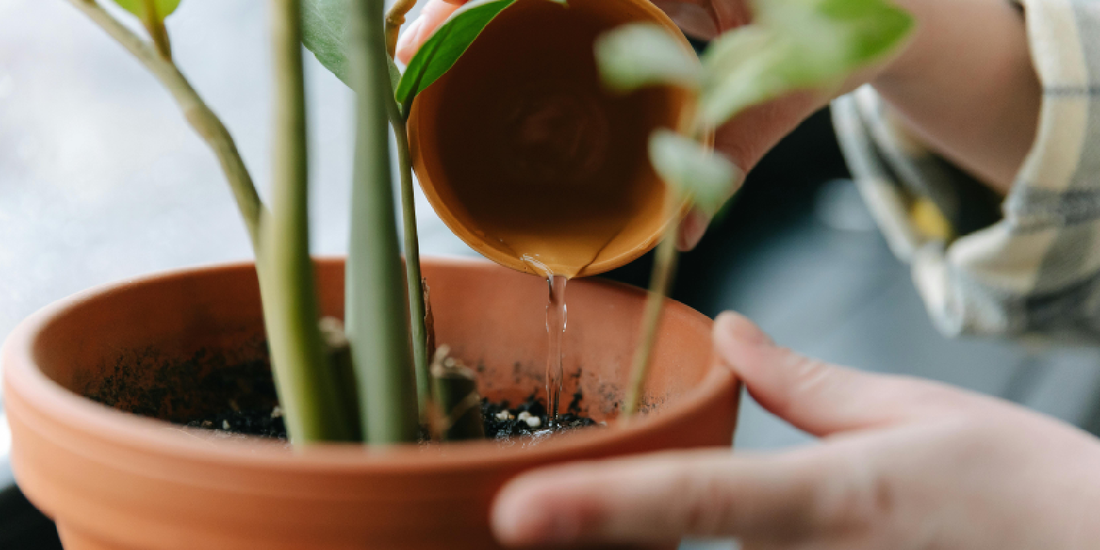
Tiered Plant Stand vs Hanging Plant Holders
Share
Indoor gardening is more than just a hobby; it has become an integral part of modern home design, wellness, and lifestyle. With increasing interest in biophilic design and the proven benefits of greenery—such as improved air quality, stress relief, and aesthetic appeal—plant lovers are constantly seeking the best ways to display their collections. Among the most popular choices are tiered plant stands and hanging plant holders.
Both solutions add vertical greenery and help maximize limited space, but they differ greatly in structure, functionality, and long-term maintenance. In this comprehensive guide, we’ll compare these two plant display styles in detail. We’ll also explore why the amoyls VerdantGlow S-Shaped 8-Tier Plant Shelf with Grow Lights offers a modern solution that combines design, practicality, and plant health.
1. Understanding the Basics
What Is a Tiered Plant Stand?
A tiered plant stand is essentially a multi-layered shelf designed specifically for displaying plants. Instead of spreading greenery across various tables, windowsills, or countertops, a tiered stand stacks them vertically. The VerdantGlow S-Shaped 8-Tier Plant Shelf with Grow Lights by amoyls represents an advanced version, with eight levels arranged in a sculptural S-shaped form and integrated grow lights for even illumination.
What Are Hanging Plant Holders?
Hanging plant holders suspend plants from ceilings, walls, or window frames. They often use ropes, hooks, or metal brackets, creating the effect of “floating plants.” They are particularly associated with trailing species such as pothos, ivy, and spider plants. Their lightweight, airy appeal makes them a popular option in small apartments and bohemian-inspired interiors.
2. The Advantages of Tiered Plant Stands
Space Optimization in Compact Homes
One of the greatest strengths of tiered plant stands is their space efficiency. Instead of scattering plants across multiple surfaces, they consolidate greenery into a compact vertical structure. For apartment dwellers or those with limited living space, this creates a concentrated plant display without clutter.
Structured and Organized Display
A tiered stand acts like a curated gallery. Each level showcases plants at different heights, ensuring visibility for every species. The VerdantGlow’s S-shaped design goes further, adding visual flow and architectural balance.
Accessibility and Care
Unlike hanging planters, tiered shelves keep plants within easy reach. Watering, pruning, repotting, and rotating plants for light exposure are convenient. For beginners or elderly plant enthusiasts, this makes plant care less intimidating and physically demanding.
Integrated Lighting with VerdantGlow
The game-changer for the VerdantGlow stand is its built-in grow lights. Many plant owners struggle with uneven light distribution—plants at the bottom of a shelf often receive inadequate exposure. VerdantGlow solves this by embedding lighting on multiple tiers, ensuring consistent growth and eliminating dependency on window placement.
Durability and Weight Capacity
Tiered stands can handle heavier ceramic pots and medium-sized plants. This stability allows users to diversify their collections, combining succulents, ferns, herbs, and even flowering plants on one shelf system.
3. The Limitations of Tiered Plant Stands
No design is perfect. While tiered stands offer organization and lighting benefits, they do have some drawbacks:
- Require floor space, making them less suitable for micro-apartments.
- Can be heavier to relocate compared to a lightweight hanging pot.
- A poorly designed stand may disrupt room flow if not chosen carefully.
However, modern options like the VerdantGlow shelf mitigate many of these concerns by offering a slim footprint, sturdy frame, and aesthetic appeal.
4. The Advantages of Hanging Plant Holders
Maximizing Overhead and Wall Space
Hanging holders excel at using unused vertical zones—ceilings, beams, and wall corners. This frees up tables and shelves for other uses, making them particularly valuable in kitchens, bathrooms, and studio apartments.
Perfect for Trailing Plants
Species like pothos, philodendrons, string of pearls, and spider plants cascade beautifully from hanging planters, creating a soft, natural waterfall effect.
Aesthetic Flexibility
Hanging planters add whimsy and airiness. They complement eclectic, bohemian, or Scandinavian interiors, and when arranged in clusters, they become art installations in themselves.
Customizable Heights
Planters can be suspended at staggered levels, creating dynamic plant arrangements that draw the eye upward and emphasize ceiling height.
5. The Limitations of Hanging Plant Holders
Despite their charm, hanging holders present practical challenges:
- Watering difficulties: overhead plants often drip, making cleanup messy.
- Limited weight capacity: ceiling hooks can only support lightweight pots.
- Accessibility issues: trimming or repotting requires ladders or step stools.
- Lighting dependence: unless hung near windows, many plants won’t thrive.
These drawbacks mean hanging holders are often more decorative than functional for large collections.
6. Comparative Analysis: Tiered Stands vs Hanging Holders
|
Category |
Tiered Plant Stands (VerdantGlow Example) |
Hanging Plant Holders |
|
Space Use |
Uses floor area, vertical compact design |
Suspends from ceilings/walls, saves floor space |
|
Best For |
Mixed plant sizes and large collections |
Small trailing plants |
|
Lighting |
Built-in grow lights (VerdantGlow) |
Dependent on natural light |
|
Accessibility |
Easy to water and prune |
More difficult to reach |
|
Weight Capacity |
High, supports medium to large pots |
Low, limited by ceiling anchors |
|
Aesthetic Impact |
Sculptural centerpiece, structured look |
Airy, whimsical accent |
|
Maintenance Effort |
Simple and stable |
Messy watering, harder to clean |
7. Lifestyle Scenarios: Which Option Fits You?
For Apartment Renters
If floor space is extremely limited, a set of hanging planters may seem more practical. However, a slim tiered shelf like VerdantGlow can double as both a decorative unit and functional plant station, replacing the need for side tables.
For Plant Collectors
Enthusiasts with dozens of species will benefit more from a multi-tiered shelf. It organizes collections while providing accessibility and stability. Hanging planters, in contrast, are not scalable for large numbers.
For Design Enthusiasts
Hanging planters add casual softness to interiors, while tiered shelves contribute a sculptural, modern statement. The S-shaped silhouette of VerdantGlow integrates seamlessly into minimalist, Nordic, or contemporary designs.
For Busy Professionals
Those who want low-maintenance greenery should lean toward tiered stands with integrated lighting. Caring for multiple hanging pots requires more effort, especially with watering and pruning.
8. Long-Term Maintenance: A Key Consideration
Cleaning and Mobility
Tiered stands are easier to wipe down and reposition. Hanging planters can accumulate dust near ceilings and are harder to clean.
Seasonal Adjustments
Plants may need repositioning during winter or summer to match light conditions. A movable shelf offers greater flexibility than fixed ceiling hooks.
Safety
For households with children or pets, tiered stands provide stable support, while hanging pots pose risks if they fall.
9. Interior Design Integration
Modern Homes
The sleek lines of a tiered stand complement minimalist interiors, offering structure without clutter.
Bohemian or Eclectic Spaces
Hanging planters with macramé holders suit eclectic, cozy vibes.
Professional Environments
Tiered stands look more organized and professional, making them suitable for offices, studios, or reception areas.
Hybrid Approach
Many plant lovers use both: a tiered shelf as the main display and a few hanging planters as accents.
10. Why the VerdantGlow S-Shaped 8-Tier Plant Shelf Stands Out
The amoyls VerdantGlow 8-Tier Plant Shelf with Grow Lights combines the strengths of tiered stands while addressing their limitations:
- Eight Tiers of Storage: Holds multiple species, from succulents to mid-sized ferns.
- Integrated Grow Lights: Ensures every plant, even on lower tiers, receives adequate light.
- Sculptural Design: The S-shaped frame creates a flowing silhouette, elevating any room’s style.
- Durability: Built to support heavier ceramic pots without wobbling.
- Compact Footprint: Despite eight levels, it remains space-efficient.
This makes it an ideal choice for plant lovers who value both design and functionality.
11. Final Thoughts
Both tiered plant stands and hanging plant holders enrich indoor spaces with greenery, but they cater to different needs. Hanging holders are perfect as decorative accents for trailing plants, while tiered shelves provide structure, accessibility, and scalability for serious plant collectors.
For those seeking a balanced solution that is stylish, practical, and supportive of plant growth, the amoyls VerdantGlow S-Shaped 8-Tier Plant Shelf with Grow Lights is the ultimate option. It transforms your collection into a living centerpiece while ensuring that every plant thrives.
Indoor gardening is more than arranging pots—it’s about creating a sanctuary. Whether you choose the airy charm of hanging holders or the sculptural presence of a tiered stand, your plants will reward you with beauty, vitality, and a daily reminder of nature’s calming presence.
